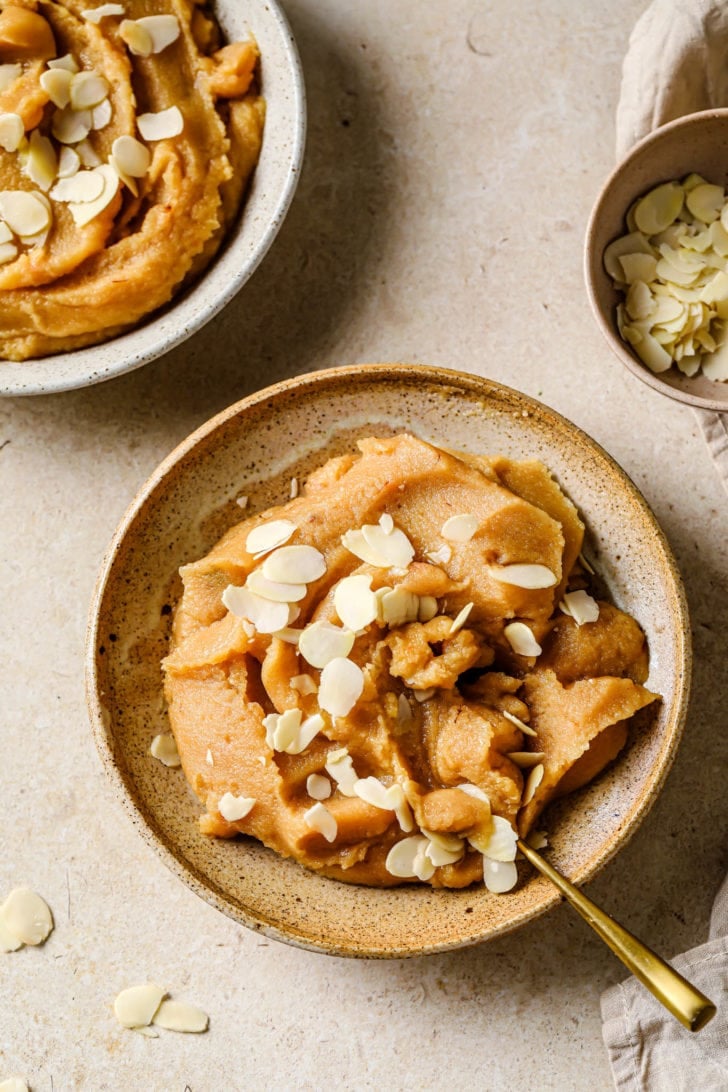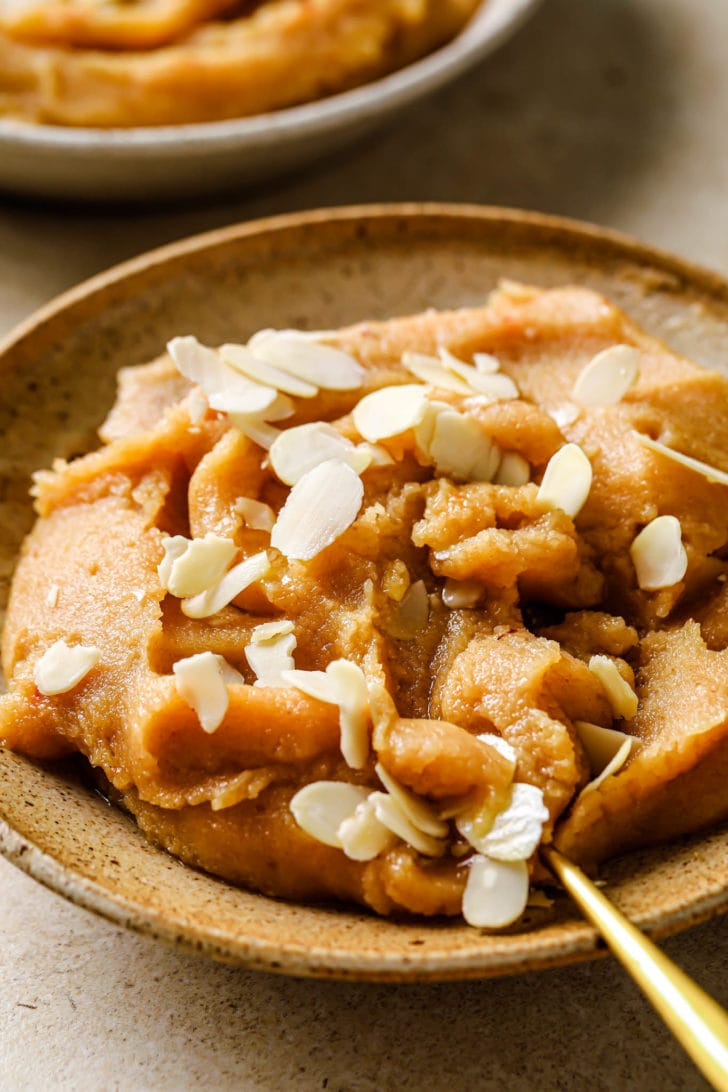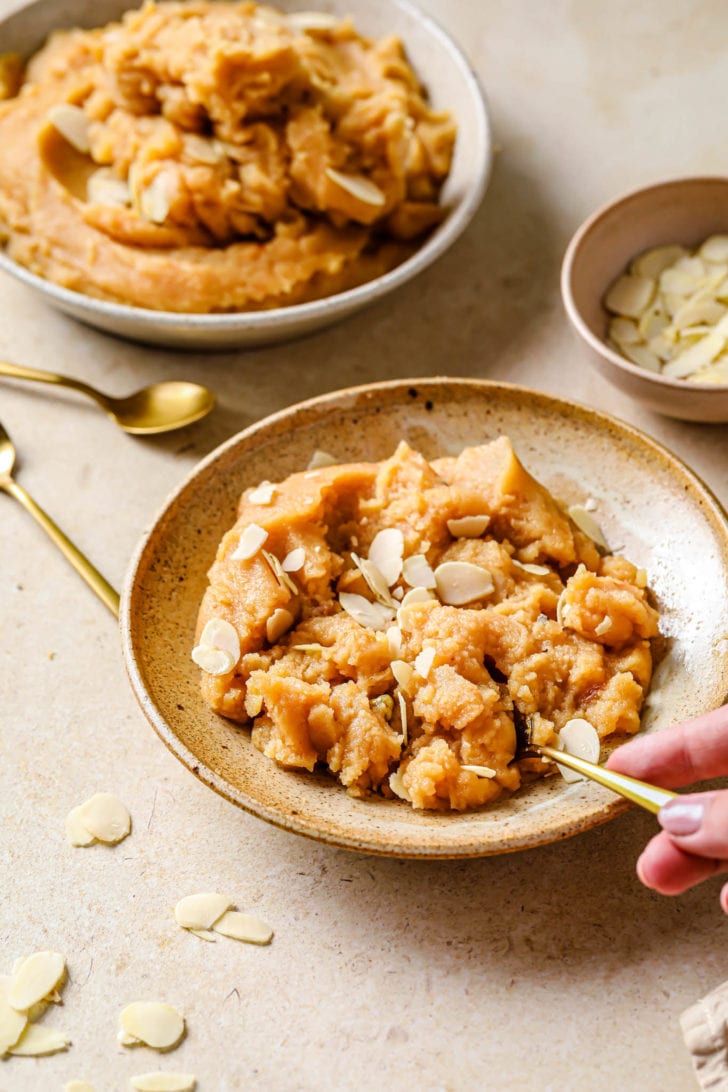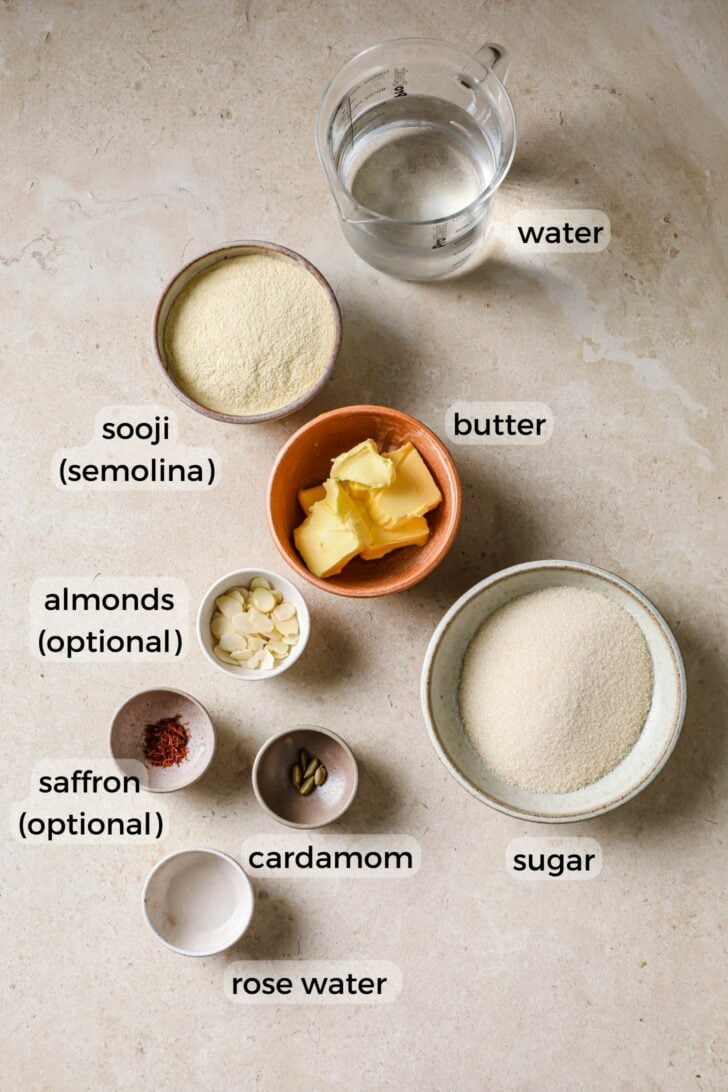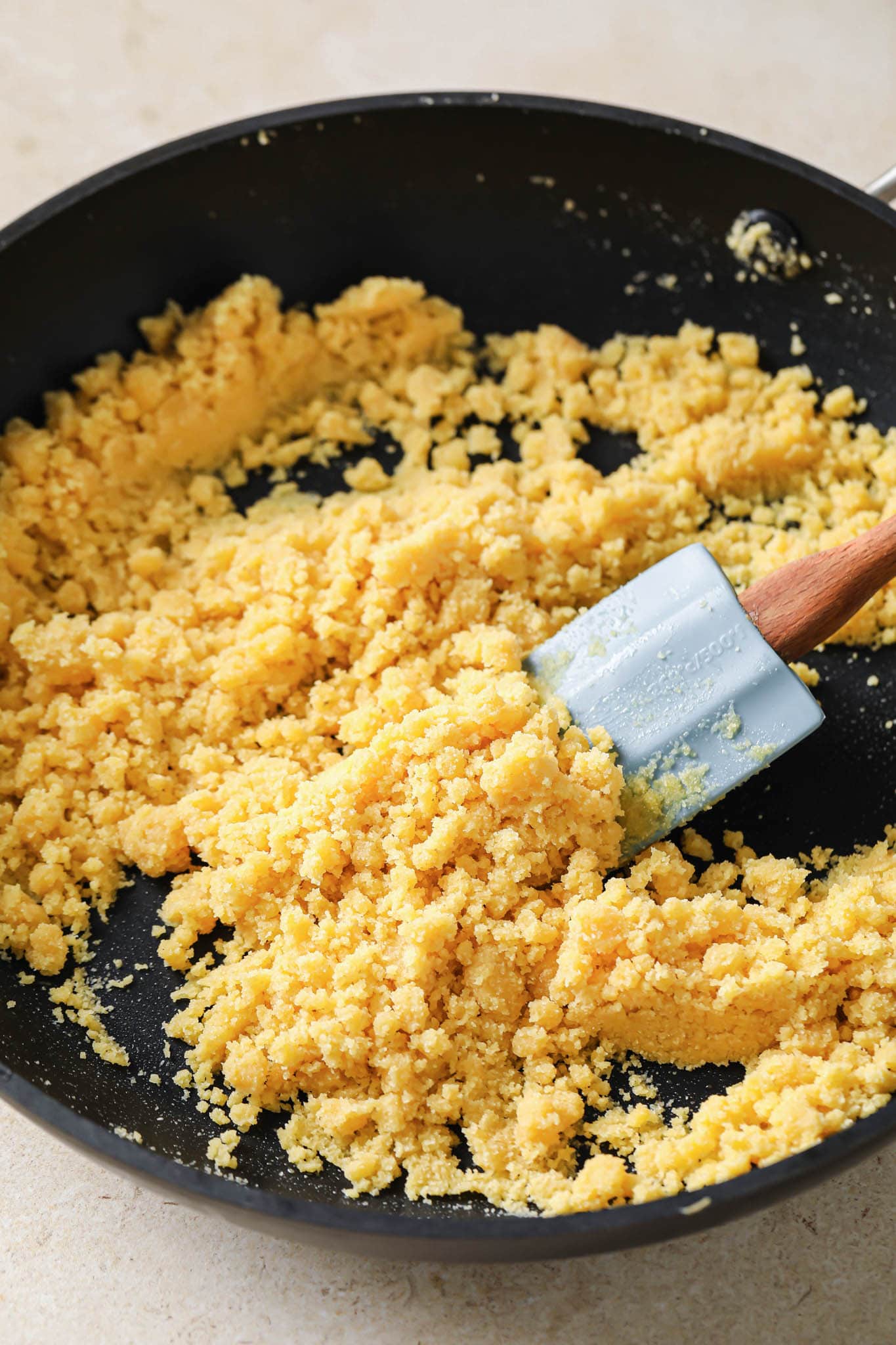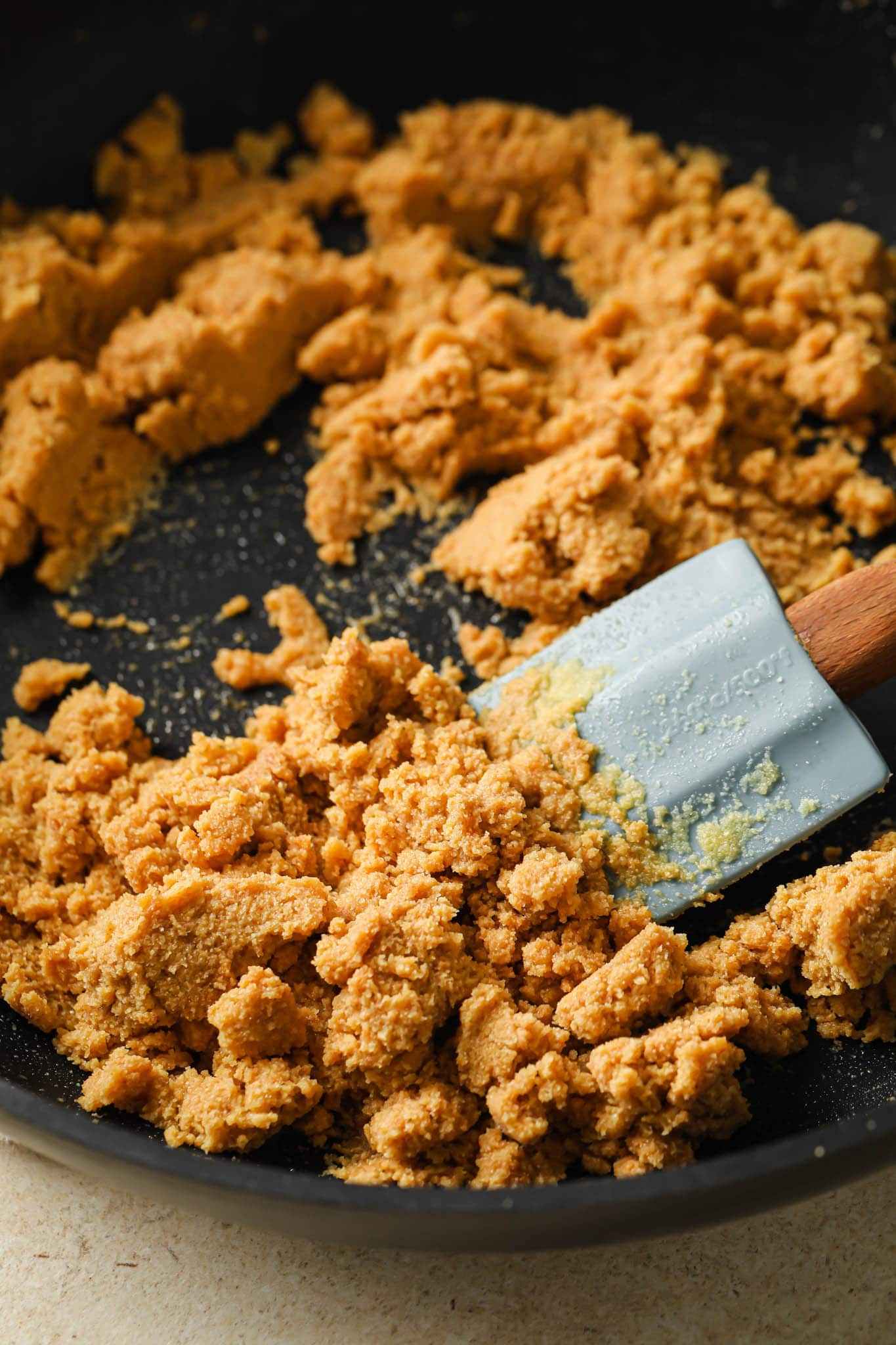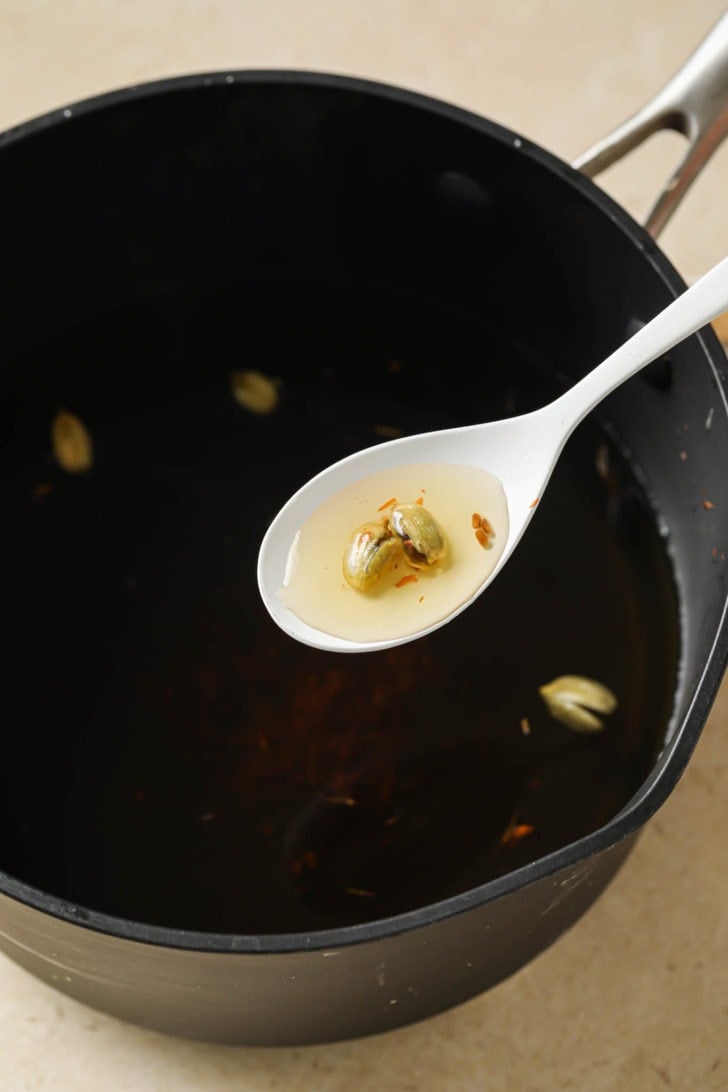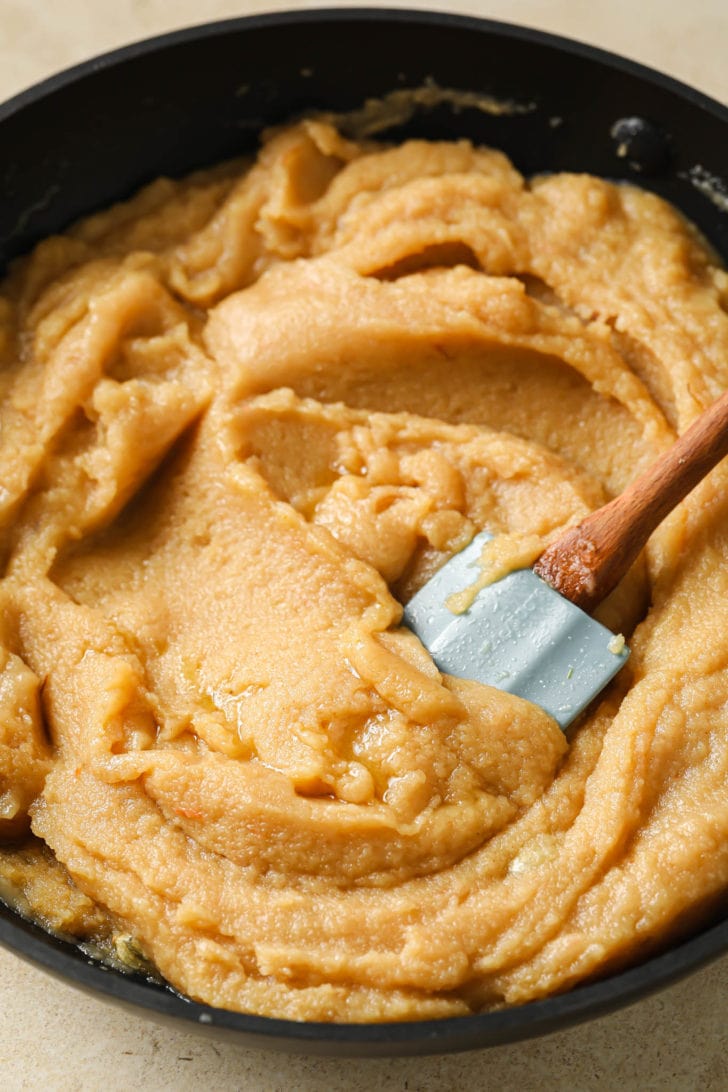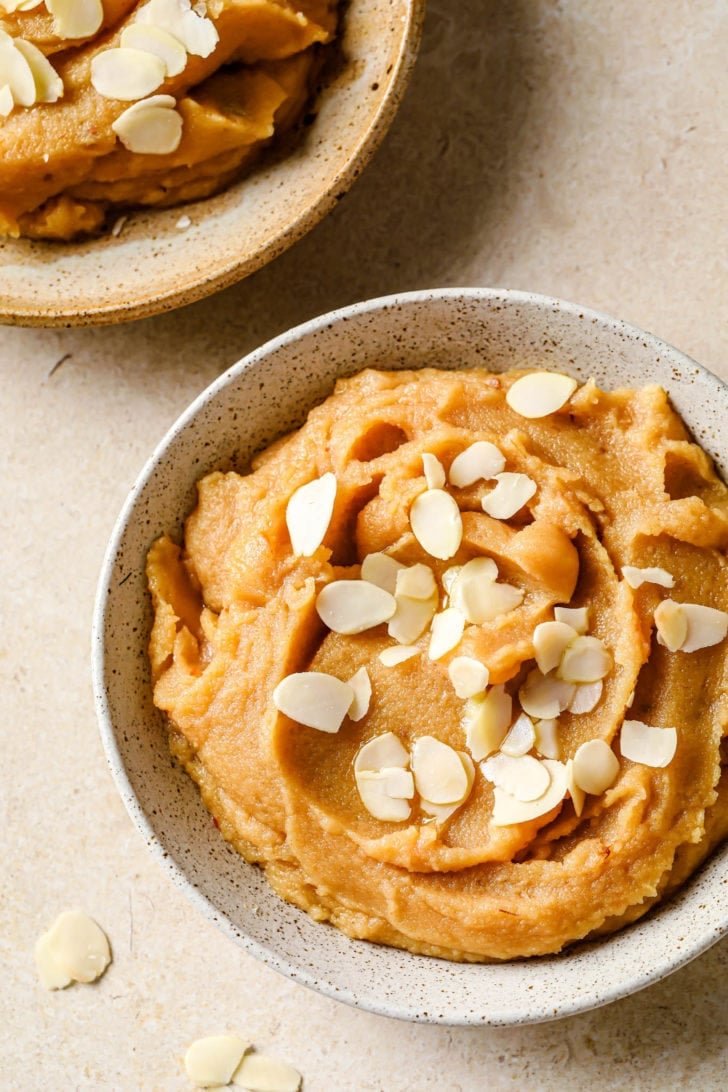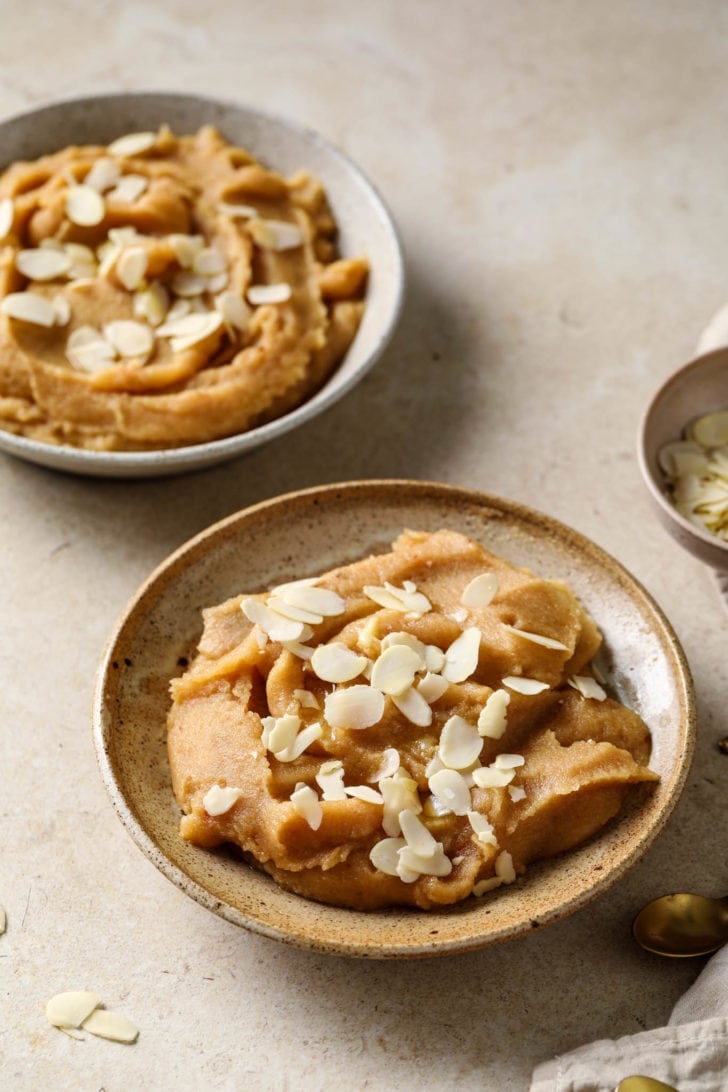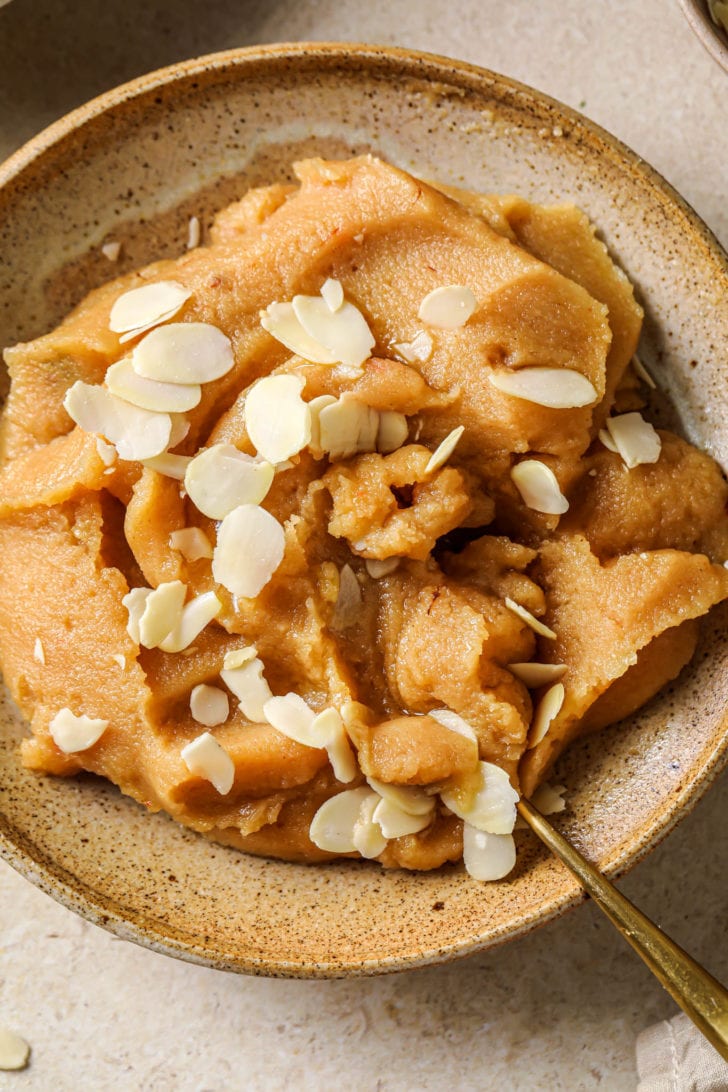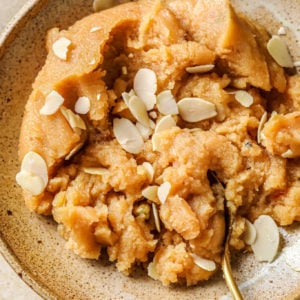Top 5 Tips to Make Sooji ka Halwa
Sooji ka halwa is considered the one of the easiest of all Indian & Pakistani desserts. But when I first started cooking, I had no idea how to transform the packet of coarse, ivory-colored flour into the miraculous, tender mass of beads that is Sooji Ka Halwa. Enter your email below and get it sent straight to your inbox. Plus, get recipes & tips every week! In fact, back then it took me a couple (okay, several) tries to perfect this recipe. I’ll go on to embarrass myself by pretty much giving away the many ways in which I messed it up:
What is Sooji ka Halwa?
Halwa, which comes from the Arabic root “helw”, means “sweet”, is said to be Persian in origin. Though most people associate halwa with the Middle Eastern confectionery, halwa in the South Asian context is essentially the transformation of an ingredient into a dessert. Halwa can be made with everything from carrots, to nuts, or even dal. Sooji halwa is halwa made from semolina, or flour made from ground Durum Wheat. More Quick and Easy Desserts: 20-Minute Sheer Khurma, Instant Pot Kheer, Crushed Pineapple Dessert
2 Types of Sooji Halwa
Though the basic method for making Sooji ka Halwa is the same, there are two prominent versions of it.
Regular Sooji Halwa: This simple, homemade version is the one I’m sharing. It’s made with all kinds of variations and add-ons such as nuts and raisins. Unlike restaurant halwa, this one is naturally wheat colored and usually served for dessert. SoojiHalwa for Halwa Puri: This restaurant-style halwa is served for brunch. It’s eaten alongside a spicy Chana Masala and a tangy potato curry with pooris or parathas. In comparison to the homemade version, the restaurant version is: Roasted for a shorter time, so it doesn’t have the deep, wheat-color. More liquidy. Usually orange-colored due to food coloring, which is added to the sugar syrup. More oily, as are most restaurant versions of traditional foods.
Ingredients
The basic recipe requires 5 essential ingredients, which you can build upon according to preference:
Sooji (Semolina): Using fine semolina gives a soft, fluffy texture while coarse semolina gives more grainy results. That said, I’ve made it several times with coarse semolina and find myself enjoying the grainier texture. (Leftover sooji can be used to make Panjeeri.) Butter or Ghee: Ghee is the traditional choice, but good-quality butter is great in halwa. To make it vegan, use oil in place of ghee/butter. Water: The amount of water will determine the texture. If you want it to be more grainy to be eaten alone, you can use as little as 2 cups of water. If you want softer and thicker halwa like the one used for ‘halwa poori’, use up to 3 cups of water. 2.5 cups is a happy medium, which is what the recipe calls for. Cardamom pods: If you don’t want pods and seeds in your halwa, substitute with a pinch of ground cardamom powder. Rose water: I use Cortas brand. Depending on how strong your rose water is, you may want more or less than the recipe amount. If you don’t like rose water or don’t have it on hand, you can omit. Saffron (optional): Crush a few strands between your fingers before using. Blanched, slivered almonds (optional, for garnish): You can also add raisins, roasted pistachios, or other chopped nuts. If you’d like them toasted (like how they are in Sheer Khurma), lightly sauté them in ghee/butter for 2-3 minutes before using.
How To Make Sooji Ka Halwa
Here’s the classic method: Not only does roasting enhance the flavor, it also makes the texture so the tiny beads don’t bind to each other to create one, big, sticky mass.
Variations
Sooji ka Halwa takes well to all kinds of fun variations:
Salt: I’ve tried using salted butter and though it gave a beautiful flavor, the salt was a little too evident. A safer option is to use 1/4 cup salted butter, 1/4 cup unsalted, or just add a pinch of salt. Milk: To make it creamier, add 1/2 cup milk once the water has absorbed. Egg: My aunt always adds a whisked egg after the water has absorbed. Sounds weird, but I’ve tried & enjoyed it.
How to Serve
Sooji ka Halwa is usually served hot or warm, but it’s also fine at room temperature. Serve it for dessert, breakfast, or a snack for when you’re craving something sweet yet filling.
More Pakistani & Indian Desserts You’ll Love
20-Minute Seviyan (Sheer Khurma) The Best Instant Pot Kheer (Restaurant Recipe) Zarda (Sweet Rice) Instant Pot Carrot Halwa (Gajar ka Halwa)
This post was originally published in November of 2016. It’s since been updated with new pictures, video (coming soon!), and a slightly refined version of the original recipe.
